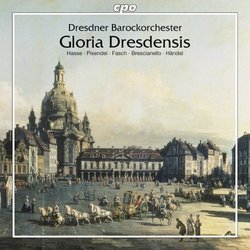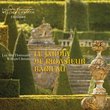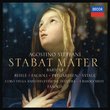| All Artists: Dresden Baroque Orchestra, Anonio Caldera, Johann Friedrich Fasch, Giovanni Battista Sammartini, Johann Adolph Hasse, Johann Georg Pisendel, George Frideric Handel, Giuseppe Brescianello, __ Title: Gloria Dresdensis Members Wishing: 0 Total Copies: 0 Label: CPO Release Date: 4/29/2014 Genre: Classical Style: Symphonies Number of Discs: 1 SwapaCD Credits: 1 UPC: 761203778225 |
Search - Dresden Baroque Orchestra, Anonio Caldera, Johann Friedrich Fasch :: Gloria Dresdensis
 | Dresden Baroque Orchestra, Anonio Caldera, Johann Friedrich Fasch Gloria Dresdensis Genre: Classical Dresden was a music capital of European rank during the seventeenth and eighteenth centuries, which means that this German city and baroque music have a common history. It was in Dresden that important composers and musici... more » |
Larger Image |
CD Details
Synopsis
Product Description
Dresden was a music capital of European rank during the seventeenth and eighteenth centuries, which means that this German city and baroque music have a common history. It was in Dresden that important composers and musicians of the time lived and worked. In 1991 graduates of the Dresden College of Music discovered their shared interest in this musical epoch and founded the Dresden Baroque Orchestra. Its members are committed to offering energetic interpretations on baroque instruments in keeping with the tenets of historical performance practice and to the rediscovery of forgotten works from the collection of the Dresden court chapel - top priorities for them that have also become their trademarks. >>Considering the international significance of the Dresden court chapel during the first two thirds of the eighteenth century, it is particularly fortunate that a substantial part of the performed instrumental musical repertoire continues to be extant today in the form of approximately 1,800 music manuscripts. These music sources were catalogued after the Seven Years' War and deposited in Schranck No: II in the Catholic Court Chapel, where they were neglected for almost a century. It was first during the years around 1860 that this cabinet was rediscovered, and its contents have received increasing attention from researchers and musicians above all during recent decades. This collection contains numerous works by composers famous far and wide such as Antonio Vivaldi, Georg Philipp Telemann, and George Frideric Handel and by musicians known today only by name and from a few pieces of information pertaining to their lives. In accordance with the demands of 'mixed taste,' the most important genres of Italian and French instrumental music from this time - the overture suite, instrumental concerto, sinfonia, solo sonata, and trio sonata - are represented in various individual forms and shapes



